Elyce Wakerman's Blog
October 17, 2017
Appearing in the Desert, Dec.5
If you are interested in attending, please get in touch via Goodreads, and I'll get you the information.
February 3, 2015
Month # 9 IT'S A BOOK!
Dimensions: 9 x 6.1 x 1.4 inches
Weight: 1.2 pounds
Hardcover: 376 pages
Publisher: Yucca Publishing (February 17, 2015)
Language: English
ISBN-10: 1631580140
ISBN-13: 978-1631580147
Average Customer Review: (Here’s where you come in,friends.)
Your ongoing interest and encouragement have meant the world to me and helped me get this baby off the ground. Now, when you find the time, I’m hoping I can count on you to sustain the life of the book by reading it and writing a (favorable)
review on the book page at Amazon, and/or Goodreads. I’ve even kept this month’s blog post extra short so that
you’ll have plenty of time to get to that other reading: A Tale of Two Citizens!!!
Before I wrap up this 9-month
blog of mine, “Birth of a Book” aka birthofabook, I want to tell you about the
actual delivery. In keeping with
the parallel between baby and book delivery, sure enough I found out just days
before the due date that the date had been changed! Moved back! That’s right,
February 3 was no longer the expected publication date; early last week, with
no warning whatsoever, the pub date on Amazon was now listed as February 17th. What?! Huh?! And various other exclamations… Exclamations but no explanation.
On the bright side, however, the publisher assured me that while there had been
a delay in the official pub date (and I still have no idea why), my books (as part of the contract, I am
entitled to a few books, which is only fair, don’t you think?) would arrive as
planned. I would definitely have
the book in my hands by February 3rd. And they sent me a tracking
number so that I could follow the progress of the package from warehouse to my
front door.
Tracking number in hand, I
checked the UPS website last Friday and to my utter delight, saw that the
package was “on the truck for delivery.”
It wasn’t even February yet, but the package would be delivered that
very day! Just like with babies – they’re early, they’re late, they’re early,
they’re late – anyway…I spent Friday pacing and gazing out the dining room
windows, from which I can see the front driveway, at the end of which would
pull up the UPS truck.
Pacing, waiting, gazing,
pacing…
At about 4 p.m., no truck came
into view, but a young man in a tan uniform was wheeling a box on a dolly
up the brick path to our front porch. I threw open the door, thanked him,
hoisted the heavier-than-I-should-hoist package into the house, tore through the
intractably sticky wide swath of tape – and there they were: BOOKS.
The book itself swaddled in its beautiful cover, with pages and front and
back flap copy and everything in its place.
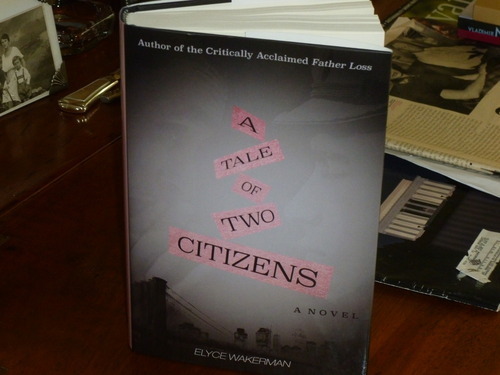
~~~~~~~~~~~
Thanks for coming on this 9-month trip with me. I’m thinking I’ll be starting another blog pretty soon to document the Life of The Book. Maybe I’ll call it something like that, keep you informed of various developments like reviews, reading and signing events, new ways of reading the book, etc. Stay tuned…Oh, this just in!
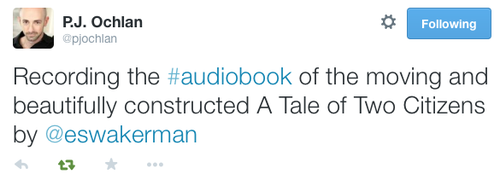
January 6, 2015
Month #8
“The books are due in the warehouse January 16th.” Yes, those were the words that arrived in a recent email from the Customer Service Coordinator at Skyhorse Publishing, Inc. And were sweeter words ever read?
“Books”
“Warehouse”
With words like these, one can begin to conjure an actual visual image of tangible existence. And one is reassured.
Not that the circular red stamp on the electronic ARC that recently arrived as an attachment to an email wasn’t a very nice step toward believing in the reality that a book is about to be published…
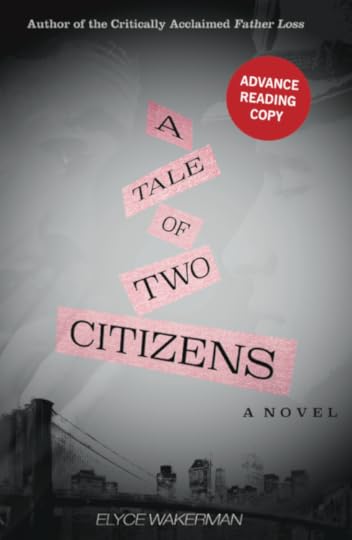
…but to picture volumes finding space in a warehouse, with perhaps even a bit of an audible thwack resulting from their being plunked down on a cement floor or a couple of shelves, well, that’s just the kind of encouragement a girl needs to keep believing that before long a three-dimensional version of what has for endless months been digital only is really, actually, amazingly about to appear.

The distinction between actual book and virtual book reminds me of the wonderful Mark Twain observation: “The difference between the right word and the almost right word is the difference between lightning and a lightning bug.”
Having the electronic ARC on my desktop is all well and good, a reassuring arrival to be sure, but holding that book in my hand? Maybe some time later this month? That’ll be lightning.
As we are still in the lightning bug stage, however, I think this is a good time to consider where we’ve been with this birthing project, and where we’re going. In answer to the questions I ended last month’s blog with:
Arrival of the Advance Readers Copy ? – Well, the electronic version.
More of me on social media ? – I’m adding to the Amazon Author’s Page at amazon.com/author/elyce-wakerman; and later this month I will have established a Facebook page for the book. It is there that I will post reviews, upcoming events, etc. I will no doubt trumpet the arrival of this new A Tale of Two Citizens Facebook page on my personal Facebook page, because, well, a girl can’t have too many Facebook pages, right?
Have I had contact with the publisher’s PR person ?—Hope springs eternal, but to date: No. However, I do have a personal appearance scheduled for Roseburg, Oregon in April (thanks to dear friend and BOAB reader, Andrew Apter), and a list of bookstores, both locally here in Los Angeles and farther-flung, that I plan to contact. I’ve talked to a few readers as well about visiting with their book clubs, another avenue I look forward to embarking upon shortly.
"So what else?"
These words peppered every single conversation my mother and aunt and grandmother had in their nightly telephone calls. They had more or less covered the topics at hand—the children’s report cards; the mysterious loss of moisture in the chicken; Johnny’s clever quip about alimony on last night’s show—but they weren’t quite ready yet to get off the phone. “So what else?”… There might very well be a pause while they considered the question, but then, sure enough, they’d always think of something else to talk about, at least another thirty minutes worth of words, thoughts, observations, little bickerings and makings-up to keep each other close and connected.
So what else? It is the 8th month of this blog and, while the New York Times report I spoke about last month strongly advises patience, let’s face it, the baby is pretty much ready:
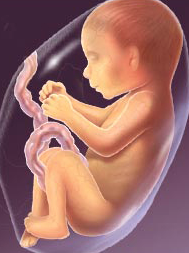
S/he’s recognizable for sure as a full-blown little tyke, ready to be held, cared-for, loved. Knowing that, an expectant mother may very well be feeling a trace of nostalgia to go with the high state of anticipation coursing through her every activity. She may find herself going back over the whole miraculous process as she marvels at the sure and steady development of this being and gets ready for the final - as it were - push. Why not do the same with “Birth of A Book,” begun eight months ago as a twinkle in my eye and heading, amazingly, to actual delivery?!
BIRTH OF A BOOK: EIGHT MONTHS AND COUNTING
MONTH #1, JUNE
At this point I was totally at a loss about how to incorporate pictures into the blog, and wrote the whole thing up on tumblr as a caption. Of course I moaned about it in this space because a) I am prone to moaning about the frustrations of technology and b) isn’t that one of the things that blogs are all about: griping and moaning? But I also introduced the nine-month framework of this project, describing the zygote, the earliest developmental manifestation of the embryo, and how it made its way to the uterus where it became a blastocyst. (Some readers wrote to me at this point about this being just a bit too much information.) My focus in this first entry, though, was to outline the history and uses of the BLURB. I am very grateful and appreciative to have gotten some wonderful blurbs for A Tale of Two Citizens, which I hope will start appearing online, but it dawns on me, as long as we’re here, why not give you a sneak peek?
“What a terrific story Elyce Wakerman tells. A Tale of Two Citizens is one of those big sprawling novels that you just can’t put down. It brings together all the passion, heartbreak and resolute spirit of the immigrant experience in a totally fresh and fast-paced novel.” - Richard DiLallo, Co-author with James Patterson of Alex Cross’s Trial and The Christmas Wedding.
”A Tale of Two Citizens resonates with today’s struggles in a gripping and suspenseful story told with narrative mastery.” - Rabbi Haim Dov Beliak, Executive Director, Jewish Renewal in Poland
“The best book I have ever read on the Midwest in the 1920s and 1930s.”-Betty Lussier, Author, Intrepid Woman
“A Tale of Two Citizens is a heart-wrenching story with knots-in-the-gut tension. I was so moved by the writing and the story-telling. The book is beyond beautiful.”-Susan Jeffers Casel, Copyeditor of the Harry Potter books
MONTH #2, JULY

OK, so I did figure out how to incorporate pictures into the essays. But it wasn’t easy; hence the photo that accompanied July’s post. In month #2, the blastocyst became an embryo: recognizable human form was beginning to take shape, and one could discern head from bottom, i.e. which end was up, which perfectly matched my clumsy but determined adaptation to blogging itself. In month 2 I described the difficulty of understanding tumblr’s various specifications, and went off into a general diatribe against operating systems all together. The first trimester is notoriously trying for the author/mother and I was no exception, although I can tell you here that I had a heck of an easier time being actually biologically pregnant than figuring out the vocabulary and know-how necessary for negotiating search engines, browsers, tabs, uploads, downloads, etc. Yet, here we are, 8 months on, and the array of illustrations that accompany my words have been downright fun to bring to you. Uncle Norman said I asked too many questions (remember?), but I think he said it with an affectionate look of approval in his eye.
MONTH #3, AUGUST

The incidence of miscarriage greatly reduced at this point, with embryo now a fetus “fully formed with arms, hands, fingers, feet and toes,” we turned our attention to an event dominating the news: the rising tide against immigration, nowhere more starkly illustrated than in Murietta, California. One of the two protagonists in A Tale of Two Citizens, Harry Himelbaum, is a young man who would today be called an “illegal alien,” so the vitriolic shouts against newly arrived mothers and children emanating from southern California resonated with my protagonist’s painful struggle to belong…In August I also paid tribute to my mother’s keen eye for writing missteps as I anticipated the arrival of the galleys the following month, again finding a parallel between this last opportunity to locate and correct errors in the manuscript with the amniocentesis and other tests available to parents in the fourth month of pregnancy. This month I also introduced the concept and function of Advance Reader’s Copies (ARCs).
MONTH #4, SEPTEMBER

In September the focus was on galleys, and I explained why getting the appearance of the official legal documents in the novel right was so important to establishing context for the characters’ experiences, but once again current events permeated my thoughts as the voices coming from Ferguson, Missouri resonated powerfully with the second citizen of the novel’s title: Will Brown, the young and earnest Iowa lawyer cum immigration official, who believes with all his heart that if America is to live up to its ideals it must take control of the growing and menacing influence of “the other.”

MONTH #5, OCTOBER

During this period of Judaism’s High Holy Days, I wondered about why I write, harkening back to myself as a child, learning that during these holidays G-d writes in a book whether we will live or die: Did I begin to write after hearing this to take some power from G-d? Or perhaps writing for me was about something else entirely: To fill in the empty space that was my father’s life… In October’s post, I also shared a photograph I had once found of a young woman and a boy: wouldn’t you write a novel, I asked, if you had found this photograph among your deceased father’s papers, and had no idea who these people were?…In month 5, I pointed out that Tuesday is the Holy Day of Publishing, the day of the week that all books are published. Reader, we’ve got 4 Tuesdays left before the official pub date of A Tale of Two Citizens: February 3rd!!!
MONTH #6, NOVEMBER

In month 6 the pregnancy is definitely showing, and so too—drum roll—was the cover of the book: I was finally able to post it, a wonderfully exciting moment, to be sure. Things started to really perk along in November – Thanksgiving, anyone? – and an article I summarized about the staying power of printed books added to the feeling of well-being. The continuing popularity of the book is especially gratifying with the very recent revelations about the dangers of some reading devices and their negative impact on sleep. Who among us is a peaceful enough sleeper to afford yet another intrusion into our nocturnal tranquility? Turn off those i-pads and tablets, friends. If you enjoy reading at night, a book may be just the thing… (I could recommend one, due out in just a few short weeks.)…The early practice of writers gathering friends to publicize their upcoming writings was yet another source of comfort in November. If Cicero could seek out followers and “likes” in the way of prompted shouts of approval, who are we to question the act of self-promotion?
MONTH #7, DECEMBER

With the fetus getting ever closer to viability, I noted that many mothers become impatient about delivering before the due date. Doctors warn against this, and two factors helped out with my impatience in December: 1) Working on an update for the republication of my earlier book, Father Loss, the older sibling as it were of Citizens; and 2) the upcoming holiday season. Citing a learned New York Times story about the wisdom of remaining patient about delivery, I agreed with the idea of allowing “nature” to take its course. Many of us would question the “naturalness” of the holiday season as practiced in the frenzy of buying, wrapping, eating, drinking, etc., but hey, it got us to this point, didn’t it?
So what else?
THANK YOU to all of you who reassured me on Facebook and in emails about the dignity of posting my father’s photograph. I had been reluctant about using his picture for the purpose of publicizing my book, but he would be proud, many of you wrote, and it really meant a lot to me.
I know this Month #8 post has been very much longer than most, and I’ve heard it said by various technophiles that it’s good to keep it short when writing on social media. So think of this as your Lamaze training, because following my next blog—that would be Month #9!—there’ll be this entity that is a heck of a lot longer than what you just read, and it is my very fervent hope that you will make arrangements to receive it; hold it in your hand; and give it a good read.
COMING NEXT MONTH:

December 7, 2014
Month # 7
Again, not unlike what an expectant mother might be doing as the delivery date draws near, I have been giving quite a bit of attention this month to the older sibling. Don’t worry, I haven’t entirely lost my mind; I know that books and babies are different, but here’s the thing: as I eagerly await the moment when I will actually hold the physical volume of A Tale of Two Citizens in my hands, I have been occupied with the update of my earlier book, Father Loss, which to my great delight is set to be reissued in February 2016. It is a pleasure to be interacting with this earlier work, even as I simultaneously try to stay on top of responsibilities attendant to the book to come, such as:
Should I be scheduling book signings for A Tale of Two Citizens? Bookstore readings?
Who does this, the author or the publisher?
Should I have received the Advance Readers Copy by now?
Has it gone out to reviewers as the publisher said it would?
If I send these questions to my publisher, will he try to be patient even as he lets me know in the gentlest way possible that I just ask too many gosh darn questions? (See blog post #2 and Uncle Norman’s admonition)
So yes, there is no shortage of things to be thinking about with regard to the upcoming publication date of my novel. But working on the earlier book is a wonderful distraction, giving me the opportunity to just flat-out write, to re-visit issues that I continue to be fascinated by, and to expand upon my investigation into what is for me one of the most compelling relationships in the human experience, that of father and daughter.
But most of all, working on Father Loss at the same time that I anticipate the arrival of A Tale of Two Citizens brings into sharp focus the undeniable fact that the vast majority of my creative and professional life has been directed, inspired, and motivated by my father – a man I never knew.
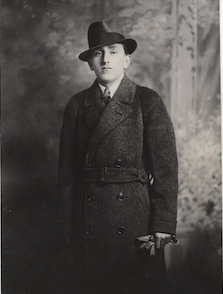
When I first thought of posting his photograph – taken soon upon his arrival in the United States, I believe. See the dapper pose, the tilt of the hat: it’s just touching as can be – the thought of mixing him with social media made me very uncomfortable. My father’s precious photograph (I have so few) on Facebook? On tumblr? Twitter? Wasn’t there something sacrilegious about that? Profane and disrespectful? Using his image to get people to read my blog and become interested in my novel? When does taking a reasonable stab at book-promotion cross the line into bald exploitation? But if my father really is at the center of it, my writing life, why not scan the photo, take a screen shot of it, and post it? Why not apply the technology and terminology at my disposal to illustrate that centrality?
This is what I’m doing now in Month #7, working on these two books at the same time. And at the heart of each of them is this man who fathered me and then died young of a heart attack: Hyman Wakerman.
Father Loss: Daughters Discuss the Man That Got Away. A non-fiction work, an intensively researched analysis inspired by my father’s absence.
A Tale of Two Citizens. A work of fiction, an intensively imagined account of his young adulthood: his illegal immigration to this country; the love he left behind in Poland and the one he found here; the ongoing struggles of an illegal immigrant as he resolutely strives to establish just one basic, simple thing: his right to happiness.
Sometimes I think that I have discovered in the drama of my father’s life the cause of his early death. But then, the novel is that: a work of fiction. A story I more or less made up, of a young man setting out in life, taking risks, meeting challenges, leaving love and finding it, taking on the mighty United States government, struggling to match move for move the tactics of an equally determined immigration official – it is a tale of two citizens, remember. Scraps of paper, photographs, letters, documents, found in an envelope marked, “Hy’s past,” sewn together with a daughter’s eagerness to give shape and form and life.
So, as I admittedly impatiently await the arrival of this novel of mine and its February 3rd due date, my father in a sense once again comes to the rescue by giving me, in the form of the earlier book I wrote about him, an object of focus and engagement: the first child, if you will.
An article in the October 12th “New York Times Sunday Review” warns against allowing impatience for the delivery date to overshadow the benefits of letting the fetus develop inside the womb for the duration of its natural term. For the sake of convenience, the article states, “Today, about half of all births in this country are hastened by drugs or surgery, double the share in 1990.” I was surprised by this, incorrectly assuming that the penchant toward natural childbirth that had prevailed when I was in childbearing mode during the late 20th century was still in vogue. But of course speed and convenience are the watchwords of this day. Not so fast, David Leonhardt and Amanda Cox, warn. “Bigger babies become smarter kids,” the headline proclaims and, the writers report – based on a study coming out of all Florida births during an 11-year period – all things being equal (economic background, etc.)…
a 10-pound baby will score an average of 80 points higher on the 1600-point SAT than a six-pound baby…Among the top 5-percent of test scorers in elementary school, one in three weighed at least eight pounds at birth, compared with only one in four of all babies.
With heartfelt apologies to my own children, neither of whom topped 7 pounds at birth, yet each of whom managed to become unbelievably brilliant anyway, the lesson from this is to hold steady, check my impatience, and be glad not only for the work I need to do on Father Loss, but for the upcoming period of holidays and all their reliably and blessedly diversionary whatnot.
May yours be merry and bright, twinkling with light, filled with family and friends and trips to bookstores, if you can find any within reasonable traveling distance from your home.

COMING NEXT MONTH:
Hopefully, the Advance Readers Copy – I’ll keep you posted.
Progress report on establishing a new Facebook page: for book or author? I’m not sure yet. More of me on social media? The question’s rhetorical.
Will I have had contact with the publisher’s PR person? Any early reviews? Will I possibly receive the book itself in January? Elyce, remember that NY Times article that warned against rushing things…
Here’s what Webmd advises for the expectant woman in her eighth month: Practice your breathing and relaxation exercises.
~
November 6, 2014
Month #6
“You’re starting to show,” says webmd to the woman beginning the sixth month of pregnancy. So it’s just perfect that I can keep the birth parallel going in Month #6 with a pretty big reveal of my own.
Drum roll…………………………………..

It’s pretty darn exciting when you first see the cover of your book, makes the fact that your written manuscript will actually be a book feel a little closer to real. As I’ve indicated in earlier posts, it wasn’t all smooth sailing with regard to the cover, but I couldn’t be more pleased with where we’ve arrived.
Simply put, as someone who buys books, I didn’t think the initial cover that the publisher and marketing people proposed was an image I would be drawn to in a bookstore. Remember them: those places where we used to duck in from the cold, or heat, and browse the shelves, and book covers – in addition to familiar authors and preferred genres – really did have a hand in drawing our attention? Technology has co-opted the word, “browse,” but many of us still think of it as something that involves our feet in leisurely movement. And of course the truth is that readers at online venues will be similarly attracted or not by that proverbial image that we are not supposed to judge a book by.
Back to what I was saying about the odyssey of the book cover for A Tale of Two Citizens, I am happy to report that my opinion was actually taken seriously and back to the drawing board they went. Now I believe they’ve come up with a cover design that is not only appealing, but one that captures the story and atmosphere of the novel. The two citizens of the title - two men with opposing points of view, needs, and objectives – confront each other head on. Their nearly silhouetted images along with the high-contrast vintage-style New York skyline locate this as an historical novel. And the title presented in individual words reflects the narrator’s discovery of snippets of information that she shapes into a story.
Kudos to the cover designer, who read the book sensitively and translated text into image with insight and imagination.
While we’re in this “showing” mode, another thing I can reveal to you this month is my Amazon Author Central page. Well, I can give you the link, and “show” it to you that way.
amazon.com/author/elyce-wakerman
If you decide to visit me there, please let me know you stopped by in the area to the left that is provided for “discussion.” Oh, likes, follows, comments, shares, discussions: how many ways are there to seek endorsement. A rhetorical question, and you know what I’m talking about. But it is the way of our world, n’est-ce pas, this constant solicitation of approval, along with self-branding, and self-promotion? Remember when the entire Western World tittered after Sally Field dramatically proclaimed, “You like me; you really really like me!”? Little did she or any of us know that the actress addressing the applauding audience at the Oscars while she baldly exposed her need for approval was actually giving us a glimpse into the future.
But also into the past.
Yes, back in Cicero’s day – we’re talking BC here – artists needed and sought manifest approval as vigorously and unabashedly as we like-seekers do today. Here’s how a wonderfully informative essay in the October 11th issue of The Economist describes literary self promotion back then:
[A]uthors ready to launch their newest work would gather their friends at home or in a public hall for a spirited … reading. Audiences would cry out when they liked a particular passage. [Even more brazen than asking for a thumbs up, right?] Nervous authors enlisted their friends to lend support, and sometimes even filled seats with hired “clappers.” [We in social media, while asking for support, likes, follows, etc. would never ask friends to throw an extra like our way, would we? Well, at least not for money!] They were keenly aware [the essay continues] of the importance of networking.
The article, “From Papyrus to Pixels,” gives an all-together sunny appraisal of the current state of publishing – if assurances regarding the staying power of paper and print evoke sunshine for you – and was called to my attention by my nephew, Ari. People continue to like their books, is the basic message of the piece, and I thank Ari for knowing that that message would brighten my day.
So dig it: could you like me on Facebook, follow me on tumblr, start a discussion with me on my Amazon page, become a friend on Goodreads, and, oh yes, while you’re over there on Amazon, even order my book? Hey man, like Cicero, just sayin’.

Of course, I write this just days after the ultimate approval-granting exercise: Election Day in the U.S. Perhaps some of you are wildly satisfied with the results of November 4, 2014, while others are still finding it difficult to function. The pundits are telling us that it’s going to “get ugly,” while the President says that he continues to be optimistic about the country. Immigration, everyone agrees, is going to be the tell-tale issue over which the sides either meet or intransigently diverge. A good and decent person comes to this country in search of a better life. A good and decent person already here feels threatened by the newcomer’s presence: A Tale of Two Citizens.
~
COMING NEXT MONTH:
Not unlike the physical preparation that parents begin in the months leading to arrival – setting up a room or a space for the baby, slowly gathering supplies and provisions, the process sometimes known as “nesting” – I am starting to think about how I can assist the book in settling comfortably in physical space. I’m talking here about lining up bookstores and readings, presentations and signings, so that ultimately the novel finds itself comfortably nestled in the palms of interested readers.
I’ll have more on this next month, when the baby’s eyes are open and the focus shifts from pregnancy to delivery.
October 1, 2014
Month #5
I WRITE TO YOU FROM DEEP INSIDE THE DAYS OF AWE. This is the 10-day period between Rosh Hashanah and Yom Kippur designated by observant Jews for serious reflection – about transgressions of the past year, repentance, and aspirations for the year ahead – knowing, and this is key, that G-d is watching and deciding upon our very worthiness to go on living, and if we do, what kind of life we will have.
“On Rosh Hashanah it is written,
On Yom Kippur it is sealed.”
When I first heard those words, proclaimed by a large and bearded Rabbi addressing a group of four-year-olds among whom I was one, I shuddered. Our behavior, and very thoughts, he told us, would determine whether we would live or die – and Reader, it was scary. Could it be why I decided to become a writer?! Books and writing are central to this whole religious arrangement, so why not try to master that which sounded so intimidating?

Is this why I write books, so that I can have a say?
According to the Jewish Virtual Library:
“One of the ongoing themes of the Days of Awe is the concept that has “books” that he writes our names in, writing down who will live and who will die, who will have a good life and who will have a bad life, for the next year. … This concept of writing in books is the source of the common greeting during this time:”May you be inscribed and sealed for a good year.”
It is not uncommon for writers to assert that writing is akin to playing G-d. I frequently attempted to tantalize my Creative Writing students with this promise. “Will the character fall in love? Fall off a mountain? Persuade or not persuade her child to come home for Rosh Hashanah dinner? It’s all up to you. You, the writer, shape events, motivation, outcome.”
A SIMILARLY COMPELLING REASON FOR WRITING, related to playing G-d, is to fill in the gaps, the things that you don’t know, or, as the author Rebecca Solnit suggests in her excellent book, The Faraway Nearby, to create connections, provide context. In my previous post, I mentioned the letters and documents that are interwoven in my novel, A Tale of Two Citizens, (whose upcoming “birth” is the driving theme of this blog). Several of these came from the many aged sheets of paper and photographs in an envelope in my mother’s dresser drawer that I found after her death, a legal-sized envelope marked “Hy’s Past,” written in my mother’s hand. Spilling from the envelope were steerage tickets, letters, government documents, photographs – and from these, I spun a tale. I took things that didn’t quite have a context – beyond knowing that my father had once touched them – and, as Solnit would describe it, I “sutured” them together to form coherence and pattern. Story. I played G-d with my father’s life (which ended when I was three), and wrote a novel.
This was one of the photographs inside that envelope:
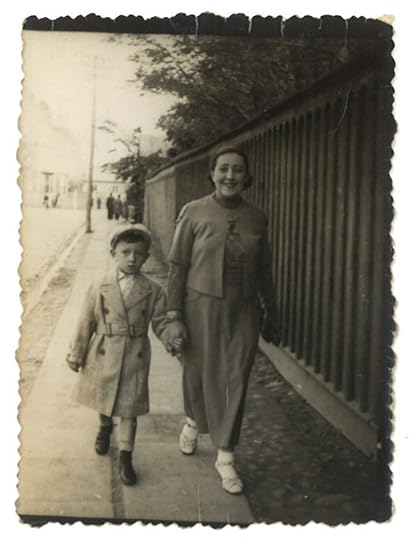
Coming upon a photograph like this, wouldn’t you want to know who these people were? What they had to do with your father? And if you couldn’t know, for sure, and you were given to dreaming up stories, wouldn’t you want to sew together the loose pages and pictures with scraps of information mentioned in passing at family dinners: things you had heard, but never thought to absorb? Things that belonged to some distant long-ago life until you realized that that life was part of your own? As a writer, I had no choice but to shape a story for my father. Perhaps, as my father’s daughter, I had no choice but to be a writer.
THE WORK OF WRITING THE BOOK - ABOUT THE HIGH-STAKES DRAMA FACED BY AN ILLEGAL IMMIGRANT IN 1930s AMERICA - COMPLETE THESE MANY YEARS AFTER THE STORY BEGAN TO TAKE SHAPE, it is now time to count the months until the novel is delivered to the public. That date, the official publication date, is February 3, 2015. A Tuesday.
Now, here’s something you probably didn’t know: All official publication dates fall on a Tuesday.
And talk about things tying together, I found this headline when I was looking for information about that fact:
Tuesday: The Holy Day of Publishing
Trying to find why this is so is like looking for reason in the Bible. Explanations for Tuesday as Publication Day run from the convenience of shipping and stocking following the weekend, to timing delivery in conjunction with the tabulations sent from bookstores to the New York Times bestseller lists. No one seems to know how “Super Tuesdays” started, but persist they do; check any pub date and you will find that it falls on a Tuesday. And that goes for the release dates of CDs and DVDs, as well. Tuesdays, we hardly knew ye!
SO HERE IT IS, FOUR MONTHS UNTIL PUBLICATION. With those unifying and all-encompassing forces of Halloween, Thanksgiving, Christmas and New Years coming up, the time should go quickly, except of course for January, which always drags like nobody’s business. BoaB reader, Beryl Elon, cheerfully observes that when it comes to this blog, “The months are flying by – much faster than the months when I was pregnant.” I know the feeling, because it seems every time I turn around I’m back here at my computer, writing up this blog. And I’ll be darned if various pre-publication happenings aren’t still following pretty closely with the months of pregnancy.
According to the website, Enfamil.com, this is the month when the mother may start feeling butterflies in her stomach. (That sure rings true to me, although I could say it for each of the previous months as well.) “If you’ve been dying to feel your baby’s kicks, you may be rewarded this month. As his movements become smoother and more coordinated, you might feel some fluttering, called quickening.”
Webmd enumerates more detailed activity of month #5:
Fat begins to form [check], helping your baby’s heat production and metabolism. The lungs are beginning to exhale amniotic fluid, and the circulatory and urinary systems are working. Hair on head, eyebrows and eyelashes is filling in…. reflexes are kicking in. [The fetus] can yawn, stretch and make facial expressions, even frown. Taste buds are beginning to develop and can distinguish sweet from bitter tastes. The baby will suck if its lips are stroked and it can swallow, and even get the hiccups. The retinas have become sensitive to light, so if a bright light is shined on your abdomen, baby will probably move to shield its eyes…. Skin is developing and transparent, appearing red because blood vessels are visible through it. A creamy white protective coating, called vernix, begins to develop. Mother might feel dizzy, faint, lightheaded; Take care not to get overtired since rapid growth can compound the burden on your heart.
I’ll make note of that, webmd, try to stay on an even keel even as Advanced Reader’s Copies are due to be sent out any minute; the new book cover still, as of this writing, hasn’t shown up on Amazon, GoodReads, etc., and G-d is busy deciding what kind of a year it’s going to be.
“May we all be inscribed and sealed for a good year.”
Writing hand, please don’t fail me now!

~
Note: To see the book cover, you can visit Yucca Publishing’s Facebook page or webpage – and be sure to check here next month when, according to webmd, the mother [author] is definitely “starting to show”!
September 3, 2014
Month #4
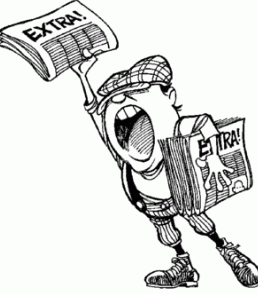
*UPDATE*UPDATE*: Perseus back on board to deliver the book.
“Birth of a Book” (BoaB) reader Mike Shapiro shared the news with me the very day after I posted my last blog: the Hachette/Perseus deal that I had reported on in Month #2 fell through. Perseus will be the distributor/deliverer of A Tale of Two Citizens.
~ ~ ~
Well, nitty is coming to gritty, Dear Readers, as we have reached five months until publication. (Another BoaB reader observed that it sure takes a long time for a book to be published. Uh, yes.)
A Labor of Love
Since last we met, the galleys arrived (earlier than expected, I might add), and in an unusual turn-of-events, I had all kinds of plans for that week that I had no choice but to bail out on, except that I didn’t reschedule a thing, because I really hate to do that, so let’s just say I worked like mad finding and correcting syllable breaks, font inconsistencies and other miscues by day and going to concerts, birthday parties, and dinners with friends by night. It was a very busy week, that third week of August, but for a writer (for whom, let’s face it, it is a godsend to get away from the desk and be with people), not many things are more gratifying than actually looking at her work on pages, not manuscript sheets, but laid out typeset pages. And, too, this is the last opportunity the author has to catch any last-minute glitches, so that the book is delivered as close to perfect as possible. More on my galley work in a moment, but first:
Keeping with the metaphor that animates this blog, one of the most important things that may happen during the fourth month of pregnancy is the choice to have an ultrasound, amniocentesis, and/or various other tests that help to determine whether there are defects present and the options that are available in the event that there are. I will stipulate here that I am not drawing an equivalency between human life and a book, rather drawing parallels to the timing and development of these two endeavors. Working within the metaphor, then, I couldn’t help but note that the arrival of the galleys and the timing of the prenatal tests occurred in the fourth month of expectancy. The metaphor is holding up. As am I – despite the groaning disappointment (meaning I did a lot of groaning) as I perused and then delved into the task of correcting areas that needed attention. I won’t bore you with how my version of Adobe Acrobat was not sufficiently advanced to work with the PDF sent to me by the publisher. (Surprise, surprise, right?) Suffice it to say that after all the technology apprehension I’ve reported on in this space, I did this very week leap into the future – which is actually the present – and installed a new computer, as well as an upgraded Word program!
But while the typesetter actually did a very good job overall – my manuscript is unusually demanding in that there are several letters that need to be graphically clear as letters, and documents from the period that diverge from the usual straight text in uniform font of most books – the missteps that did exist simply had to be addressed, and they centered mostly on the authentic 1930s government documents that are embedded in the novel.
The documents are part of the story. Beholding from the point of view of the immigrant a communication sent by the government of the United States – what the piece of paper looks like, with all its lines and legalese – is a vital part of the immigrant experience.
At one point in A Tale of Two Citizens, for example, after he has petitioned the government on behalf of his family, Harry, our protagonist, receives such a document, whose content will determine his future, and it simply must look authentic. It must appear in its own font, not a continuation of the font that the rest of the book is printed in, but as a separate, official document, intimidating and scary, and read with a trembling hand.

Of course, I have crossed out and you will learn when you read the book what the Secretary of Labor has recommended to the Secretary of State, but I include this snippet of an authentic replica of a 1930s document to demonstrate how seeing what Harry sees is integral to getting inside his experience. These kinds of documents going back and forth, and including everything from arrest warrants to deportation hearing notices – exactly as they were generated in the 1930s – add color and authenticity to the narrative, and the painstaking work of correcting any oversights in the galleys was nothing more or less than a labor of love.
Fortunately, I did have one more opportunity to go over the galleys after the typesetter applied my corrections, and I am pleased indeed (although I’m sure my mother would find a spelling error somewhere). Did the typesetter do a perfect job? Well, there are still a few glitches. Would I like to go over the galleys once more after my latest round of notes because I want the book to be absolutely perfect? Of course. But word has come down: my work on the physical production of the book is done. There is now only to cultivate and care for it, and do what I can to send it out into a world in which it will thrive.


One of the things that struck me as I was reading the galleys during that third week in August was a tone that sounded oddly familiar. In one specific scene especially, Will Brown, the immigration official in the novel, and Harry’s nemesis, is interrogating a woman whom he suspects of defrauding the government. From the moment he greets her, in his cubicle at Ellis Island, he sounds hostile, suspicious, downright antagonistic.
The voice was particularly unsettling, even more so than when I wrote it. And then I realized: it coincided precisely with the voices we were all hearing coming out of our TV sets, emanating from Ferguson, MO, as police officers and other authority figures pushed and prodded and commanded and distrusted and shot rubber bullets and tear gas at those who were gathered to assert their rights as citizens. Those who have for far far too long been regarded as The Other.
I heard the tone in Will’s voice, circa 1930; we all heard it coming from America’s heartland two weeks ago; and at the end of the fourth month, we can hear the sound of the baby’s heartbeat. Well before delivery, we do all that we can to bring it into a world where it will thrive.
~
Postscript: A heartbeat that was silenced on September 1st belonged to Sam Zwass. Sam’s patient and knowledgeable translation of Polish, Yiddish, and Hebrew documents belonging to my father helped me unfold the world that became this book.
August 7, 2014
Month #3


Since we last checked in with each other, we’ve been witness to a lot of global anger, but the spectacle that lingers like an embarrassment is the one we were treated to out of sunny Southern California: Murrieta, population 103,466, and growing – a fact it would seem the residents are not particularly happy about.
“Go home”; “We don’t want you,” crowds of these mostly white protestors shouted at buses carrying undocumented mothers and children from Central America. They did some spitting too, and illegal interfering with law enforcement, even as they condemned the illegality of the people toward whom they were hurling their hatred. The buses were operated by the Department of Homeland Security, moving these women and children for the purpose of deporting them. Perhaps, as suggested by Raul Reyes in The Huffington Post, some of the protestors were outside agitators, not actual citizens of this bedroom community in Riverside County. But there’s no quibbling with the fact that they were American citizens, and they were definitely behaving badly.
Despite the stirring eloquence of Emma Lazarus’s 1883 poem, the attitude of the general American population towards immigrants has never been encouraging. In brief, they are not welcome. Of course, we have to admire the United States for being the only country on earth that is actually composed of immigrants; it’s a very tough thing, this American experiment aimed at inclusion and equality. Yet, while most of us are from immigrant stock, the contempt and resentment persist.
In the 1920s, the decade in which my novel begins, a battery of quota laws was enacted specifically to minimize the undesirable influx of eastern and other ethnic Europeans. Not only were they, like all newcomers, subjected to stringent legal, medical and general knowledge tests that frequently had the effect of humiliating them as they disembarked at Ellis Island and other ports of entry, but quotas clearly favoring whiter northern Europeans had been codified in 1924.
Into this unwelcoming climate in the year 1929 steps my protagonist Yankel Himelbaum: eastern European and, owing to circumstances, forced to lie during his entrance exam. The lie and its consequences follow him through the entirety of his young adulthood (and the book) and reverberate with the terminology that has become all too familiar today. Yankel, who comes to be known as Harry, is an illegal alien, circa 1930s. Will Brown, the other main character in the novel, is a young lawyer specializing in immigration law. Rising in the ranks of the newly formed INS, Will has dedicated his career to ridding the country of job-stealing aliens like Harry. In brief, they must be deported.
Truth be told, when I landed on the story, and gradually came to realize that it was going to be the subject of a novel I would write, I had no idea how very timely it would be.
In six months A Tale of Two Citizens will be published! Ready, if all goes well, to be delivered into the world. “If all goes well”: like the expectant mother (and genetically programmed Jewish woman) I must be mindful not to take success for granted. Things can go wrong.
But at the completion of the first three months of pregnancy, the incidence of miscarriage is greatly reduced. The blastocyst cum embryo is now a fetus, fully formed with “arms, hands, fingers, feet, and toes,” per webmd.com. It feels safe to tell people, and most of us do. Of course, I’ve been blogging at you since Day One of the nine-month frame I created for these postings. And I was hoping that in the way of paralleling the completion of the first trimester of pregnancy and its accompanying revelation that I would be able with this post to reveal the book jacket of the novel. But the publisher tells me not just yet. Let’s wait with public release of the cover until the ARC is ready, an email advises.
The ARC is the Advance Reader’s Copy. Which, according to the publicity guide sent to me by the publisher, goes out to “editors and reviewers at book trade publications (such as Publishers Weekly) and review journals, as well as book and specialty retail, school, and library trade magazines.” The ARC, meant to engender early interest in the book, should be ready by the beginning of next month, I am told, which is pretty damn exciting, even to a woman inclined toward caution in all things.
(Indeed, since Dickens inspired the title of my novel, I could return to him to entitle this post and my overall approach to life, “Guarded Expectations.”)
The ARC is not to be confused with the final typeset PDF. As I understand it, the former lacks the final formatting of the latter. The equivalent of what were once referred to as “galleys,” the PDF, or Portable Document Format (created by Adobe Systems, keep in mind) will come to me in about a month, looking very much like the pages of the ultimate print and electronic editions, and will be my final opportunity to find and correct errors. Galleys used to be gone over with a pen or pencil, of course, but guess what program I need to proofread the PDF? Adobe Acrobat, anyone? Do I have any idea how to install or operate that program? As I said, things can go wrong.
Hopefully, by the next installment of “Birth of A Book” ARCs will have gone out, I will have mastered the 21st -century variety of proofreading, and will also be able to share the book jacket with you. This is the second version of the cover, by the way; the publishers, having been responsive to my reservations about the first version, went back to the drawing board and came up with a much more enticing cover that captures, I believe, the dramatic tension and overall atmosphere of the story.
Perhaps I will have received the PDF by my next posting, and be able to report that not one single thing needed to be corrected. Such was not the case for author extraordinaire, Marcel Proust. Here’s what his galleys looked like:
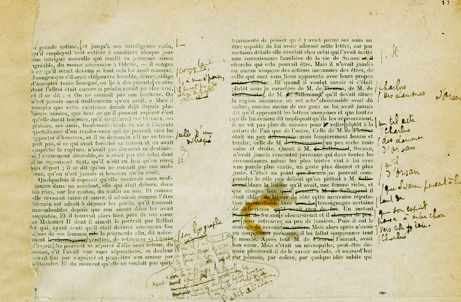
First galley proof of A la recherche du temps perdu: Du Cote de chez Swann with handwritten revision notes by the author.
The galleys that arrived for my book Father Loss looked very much like this, although, of course, they were in English, and they comprise one of my dearest remembrances of my mother.
During all of elementary school, junior high, and most of high school„ I was a pretty competent student writer, but each and every composition was gone over with a fine-tooth pen by my mother. A bit apprehensively, I would hand her the “finished” product as she sat at her customary place at the kitchen table, and sit opposite her as she read the pages, nervously hoping that maybe this time she wouldn’t find anything wrong. Never happened.
So when I received the galleys for Father Loss, my first solo book endeavor (Air Powered was a collaboration), I thought she’d get a kick out of going over them after I had. I made a copy and mailed the pages to her. (Paper, stamps, the post office – the whole bygone bit). This will make her really happy, I thought, and proud. And won’t she just love that the book is dedicated to her! All those expectations did indeed came to pass, but here’s the amazing and memorable thing: Selma Wakerman, who never made it past high school and worked her whole life as a secretary, went one better than the editors at Doubleday and her cocky published-author daughter: Mom found a spelling error in the galleys. Thanks to her, it is no longer there.
Something tells me that if she were still with us, she’d teach me how to use Adobe Acrobat.
See you next month, by which time I will have figured it out on my own.
I think.
~
July 2, 2014
Birth of A Book, Month #2


The big challenge for this second month of the nine-month gestation period during which my novel goes from manuscript to book has turned out to be technological. Surprise, surprise. But I felt strongly that by the time I came to you with the second installment of this blog, I wanted to have a stronger grasp of its execution: how to place photos; apply bold or italics to a piece of text. Oddly enough, this struggle with the ups and downs of posting just happens to coincide with what is going on in a woman’s body during the second month of pregnancy.
In my previous post, I promised only a modicum of science, but for those of you with a hankering for technical precision, the second month of pregnancy sees the blastocyst become an embryo. This is big, especially when you discover, through the auspices of the medical dictionary at Medicine.Net what a blastocyst is:
A thin-walled hollow structure in early embryonic development that contains a cluster of cells called the inner cell mass from which the embryo arises.
A blastocyst looks something like this:
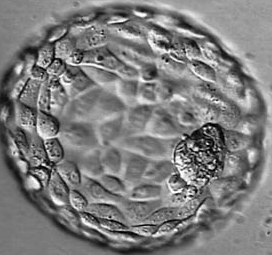
An embryo, more like this:
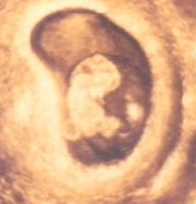
Recognizable human form is beginning to take shape, but here’s what’s distinctive and oh so salient about this period: According to about.com:
In the beginning of this month, it’s hard to tell which way is up on your baby. As this month progresses it becomes very easy to tell which end is your baby’s head and which end is your baby’s bottom.
Which end is up: this is precisely what I had determined to discover before coming to you again with my thoughts, experiences, and insights about delivering my novel, A Tale of Two Citizens. By the second installment of “Birth of A Book,” I would have tumblr down cold, in the pocket, slave to my mastery, (even if there was nothing I could do about that gnawing absent ‘e’ before the ‘r.’)
To achieve my goal of learning how to craft a blog into something that looked reasonably inviting, I sought human expertise – my daughter*; the nice young IT guy who’s house-sitting next door; an acquaintance and fellow-writer who generously offered to help me out - I watched videos, read articles, exchanged emails with the pros at tumblr itself, plumbed (or shall I say plumbd?) the known universe to learn the ins and outs of what I was assured by everyone is by far the simplest platform for a blog. (And who even knows if “platform” is the right word for tumblr? As I make my way through browsers, search engines, operating systems, crowd forums, composing software - the jargon is endless).
Reader, here’s what I came up with, the top and bottom of it all: The operating system on my computer is too small to allow me to upgrade my search engine to make it so that it can accommodate the interface that would make posting as simple and quick as tumblr’s well-deserved reputation of ease suggests. To wrap up the meta-blog portion of this post: In order to get these thoughts out to you, I need to buy a new computer! Or: post my entries on my husband’s machine, which has the necessary memory to accommodate tumblr’s simple format. I have chosen the latter; how’s that for a high-tech solution?
*To delve more deeply into what our children go through when they try to teach us the most basic uses of technology, you may enjoy this Amy Schumer sketch, sent to me by my daughter:
https://www.youtube.com/watch?v=A6A331B1oq8
Eight Months to Delivery: Wherein Mother and Author May Lose Their Marbles
I’ve already shared with you one of the things that made my head spin in this most recent month, and once again the timing of my emotional sensitivity parallels that of the expecting mother: Paraphrasing about.com:
The pregnancy symptoms really kick in during this month. You may find that you’re alternating between being tired, wide awake, unable to sleep, sweating and/or feeling like you want to be sick. …The mood swings can also be rough. Make sure you tell those around you and your closest circle what’s going on so they don’t think you lost your mind.
Consider yourself told.
The other thing that kind of threw me for a loop (as long as I’m going with all these circular images) this past month was an unexpected development about the delivery, itself. Or the deliverer: the very excellent and highly regarded company that was on board to distribute my book was sold! That’s right, mere months before the due date, a heretofore unknown entity, to me at least, has come on board to handle the delivery. Perseus, the large New York company that was set to distribute my book, was bought by Hachette (we won’t even talk about the name), an even larger New York publishing company. But it’s not quite as straightforward as that. Here’s how the transaction was described in Publishers Weekly:
“The Perseus Books Group is being sold to the Hachette Book Group which will sell the distribution business to Ingram.” As noted by The Associated Press, “Perseus has … been a top distributor for smaller publishers.” Oh, great. Will my feisty, small, independent publishing company get lost in the behemoth that is Hachette/Ingram? What will become of my debut novel?
You may remember from my first post that my Uncle Norman told me I ask too many questions. I’ll tell you the story behind that, mainly because it gives me the opportunity to include a picture of a kitty – and for whatever reason, people surfing the Internet just love a picture of a kitty. Also, it’s a good story.

It was the 70’s, and I was getting ready to fly cross-country to meet up with my boyfriend, who had moved from New York to San Francisco and found us a place to share with some other friends and, my trunk already shipped, I was planning to take to the airport my guitar, and two cats – mother and daughter as it happens (fitting nicely with the maternal theme of this blog.) The night before I was to take my flight, a friend told me that I needed documents of good health for each of my cats before I would be allowed on the plane with them. Huh, what? It was dark out already; I’d never find a veterinarian at this hour; who wanted to find a veterinarian at 9 p.m. in Manhattan? Put the cats in their carrying cases, find a cab…? I decided it couldn’t be true. According to my Uncle Norman, this is where my reasoning should have ended. Alas…
I called the airline, hoping that my friend’s information was wrong, was told that indeed I did need certificates of good health for the cats, and what was there for it but to pull out the Yellow Pages (along with my hair) and search for vets located near my mother’s West 24th Street apartment, where I was staying. Many, many phone calls later, I finally reached a vet who said he would see me at 6 a.m. the next morning, so that I could still make my flight.
Wrestling the cats into their cases at the break of dawn on the day I was moving clear across the country from anything I had ever known, striding with an angrily jiggling carrying case under each arm, I arrived at the West 26th Street offices of Dr. ______, whose name I have forgotten but whose kindness I never will, and rang the bell. Mama Cat and Kitty checked out just fine and the doc filled out the necessary forms.
By the time we human and feline mothers and daughters got to the check-in counter at the airport, I was sweating, but I felt confident that I’d make the flight and that I had all the necessary paperwork for the cats. Which I didn’t need. No one asked for the documents.
My mother and I were rolling our eyes over all the unbelievably unnecessary last-minute hassles, when my Uncle Norman appeared completely unexpectedly at the gate. He had come to see me off, and that made me feel very good. My father died when I was three years old (the poignant story of his immigration to the U.S. is at the heart of A Tale of Two Citizens), and Norman’s attention and presence over the years meant a great deal to me. This morning was no different. I hugged him and told him what had happened with the cats’ health certificates, how I’d called the airline the night before, been told I had to have the paperwork, and in fact it hadn’t even been needed; no one even asked for any kind of documentation about the cats. And that’s when he looked deep into my eyes and said it, like it was the most important piece of information about me that he would ever impart: “Elyce, you ask too many questions.”
Jeff met me at the airport in San Francisco, put one cat carrying case under each arm and welcomed me into his life. In about a half hour, I’m going to see if I can use his computer.
I’ll see you in about a month, when the first trimester of expectations will be drawing to a close, and the baby’s eyes will be wide open - the better to see the cover of the book, which should be set by then!
~
June 4, 2014
Dear Reader, it is so good to be in touch. Although the truth...
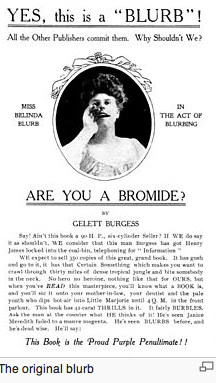
Dear Reader, it is so good to be in touch. Although the truth is, I didn’t always feel that it would be. You see, I am contractually obligated to become active in social media as a way of publicizing my forthcoming novel (due out in February 2015) and as anyone who knows me will not be surprised to learn, I did at first balk. I’ve written a 300+ page book, I balked, spent countless hours at my desk writing and rewriting; researching and searching for the next sentence; nursing fictitious relationships, reactions, reasonings. I fashioned a world for my characters, and they most generously worked on the shaping with me. (Yes, this does happen. Characters do indeed help write the story.) The project took me five years, give or take, to mold, imagine, put into words, structure; it took me to libraries, phone conversations with long-lost relatives, and a small village in Poland. I’m talking, remote. Mostly, it took me to my desk chair, and countless screens that dared me to fill them. Mornings, afternoons, days and years of doing this. So at long blessed last, when I had something to show, and an agent said yes, and then a publisher said sign here, and the product of my work looked actually to be headed toward a date when people could actually read it, word came down: “You want people to read your writing? Start writing!” And here we are.
My novel is called A Tale of Two Citizens, and it will be available for you to read in February of 2015. I know I gave you the pub date already, but I think a basic tenet of publicity is repetition. Anyway, here is how I am going to think of this writing venture, which, for lack of a better word, let us agree to call a blog: this writing that I’m doing here and which I hope you will enjoy and even comment on, I will think of as A Tale of Two Citizens, The Prequel: You and I. Thank you, Reader, for being here, for without you, the title makes no sense. With you, we two citizens, writer and reader, may proceed.
STRUCTURING THE BLOG
As suggested by the invitation I posted last month, “Just A Twinkle in my Eye,” I am going to think of this nine-month period of time during which the manuscript becomes a book to be delivered as akin to the time leading up to birth, and I will post one entry per month.
CONTENT OF THE BLOG
I am told that the most successful blogs contain information and advice, so I will do my best to provide the former, and promise not to even attempt to offer one scintilla of the latter. But I suspect that together we will find that this pre-publication period does indeed reflect the stages of pregnancy – when we hold something that means a great deal to us as close as possible, and do everything in our power to insure that it will be prepared to thrive, until the day comes when, with excitement and more than a bit of the jitters, we release it to become part of the world. It should be interesting to see how my pre-pub/pre-natal theory holds up. Here’s how it worked out for Month 1.
The First Month of Pregnancy begins with the ZYGOTE, the initial cell formed when two gamete cells are joined via sexual intercourse. The zygote is the earliest developmental stage of the embryo and it makes its longest trip before birth itself as it makes its way via the fallopian tube to the uterus. By this point, the new life form is called a blastocyst – and that’s it for the science portion of this blog. I just wanted to get my metaphor going, but I’ve had enough. Deep breath. OK, let’s get back to book talk. In other words, the blastocyst aka novel aka manuscript is implanted and ready to be nurtured to a robust delivery.
NINE MONTHS TO DELIVERY: WANTED AND UNWANTED SHOUT-OUTS
When we first find out that we are pregnant, two dueling instincts hit us at once: to shout it from the rooftops and to not tell a soul. Premature announcements could bring bad luck, so most of us keep the most exhilarating news we’ve ever received close. Well, lots of luck keeping an upcoming publication a secret, not that I wanted to, but something else I didn’t want was a flurry of emails and phone calls coming at me from an independent vanity press and its “publishing consultant,” who were “excited to hear” that A Tale of Two Citizens was completed. Huh? Some people I’d never heard of were excited about the completion of my book? Inviting me to send them a copy so that they might “consider” it for publication? Who were these people, and how in heavens name did they know the title of my book – not to mention my email address and phone number?!
Turns out, when you apply for copyright with the Library of Congress, your information becomes part of the public record. I know I promised not to give advice here, so just consider this a piece of information. A government application can be tantamount to talking to strangers.
Talk about the opposite of keeping the upcoming publication of a book close to the vest, it is during this period, about nine months prior to delivery, that an author is instructed to do everything in her power to make herself conspicuous (unlike that first month of pregnancy, when you really don’t want to “show”). So yes, I’m now tweeting, facebooking, blogging, turning nouns into verbs, and also, shamelessly, asking people to write nice things about my book - in the form of a blurb. Fortunately, I have yet to hear the word “blurbing,” – although it does sound like something a baby would do, doesn’t it? – but asking for blurbs has been an ongoing activity lately. You know, those brief descriptive, complimentary remarks you find on the back of a book that assure you that this will be a wise purchase? Well, someone, usually the author, has asked those people to read their work and, if they find it worthy, to write something that will encourage others to read it. I have been fortunate, indeed, to have garnered some wonderful blurbs, but I also started to wonder about that word. Here’s the scoop:
The word “blurb” was coined by American humorist Gelett Burgess in 1907, and actually named after a fictitious young woman he had decided to name Miss Belinda Blurb. There she was on the dust jacket of his book, (see illustration above), promoting its excellence. And, as it were, being described as “in the act of blurbing.”
Oh, well. Is no noun safe?
My Uncle Norman once told me quite sternly and in no uncertain terms that I ask too many questions. I’ll tell you about it next month.
By which time, the baby’s heart will be beating.
~



